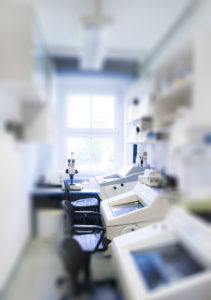Now that we’re in summer, it’s a good time for a reminder to cover your skin and wear sunscreen to prevent skin cancer. But what if you’re diagnosed? Here’s a brief primer in Mohs, and a bonus: how to get
Mohs CEUs for your ASCP!
keyboard test software download
edius pro 7 32 bit free download full version with crack
malwarebytes licence a vie 2019
passfab activation unlocker gratis
Summertime: Skin Cancer & Mohs
Karen DiDonato ⋅ June 22, 2021
During my lunch breaks recently I have been enjoying the beautiful June weather. I take my dog for a slow walk around the neighborhood while listening to the songs of the birds that weren’t so loud in the previous months. I often think of my walks outdoors as my Vitamin D time. Today was the first day I actually thought of donning a baseball cap since it seemed a bit too bright for my sensitive eyes. But what about my skin? I haven’t yet thought about sunscreen… yet I really should.
According to The Skin Cancer Foundation, skin cancer is American’s most common cancer with over five million cases diagnosed in the United States each year. Thankfully skin cancer is the most preventable form of cancer. But if you are diagnosed, Mohs surgeons and Mohs technicians work together effectively to treat common skin cancers.
What is Mohs Surgery?
Developed by Frederic E. Mohs, MD in the late 1930’s, chemosurgery (now known as Mohs surgery) is a specialized technique to remove cancerous areas on visible parts of the skin as well as the roots, which can spread to other parts of the body. It is done in stages and in one visit while the patient waits after each stage. The surgeon removes a layer of tissue, a technician freezes the tissue, cuts very thin horizontal sections, then stains and covers it for viewing microscopically. If the surgeon finds cancer cells on the tissue, another layer of tissue is removed, and the lab work starts again. This process is repeated as many times as needed until the surgeon is confident there are no more cancer cells. The technique is highly effective and is best for patients since it leaves behind more healthy tissue with less scarring.

Who was Dr. Mohs?
Frederic Edward Mohs was born in Wisconsin in 1910. His father died when he was just three months old. His mother moved the family to Madison to send him and his brother to the University of Wisconsin (UW). He graduated from UW and then, in 1934, from UW Medical School. While he was at the Medical School he developed the technique.
Please note the spelling of the technique is the same as his last name: “Mohs.” I often see this mistyped on resumes in all capital letters. It is a person’s name, not an acronym; therefore, Mohs should be written with a capital “M” with all the rest of the letters in lowercase.
The American College of Mohs Surgery created the Advanced Mohs Technician Training Program to improve slide preparation technique to current Mohs Technicians. This program is approved for continuing education unit (CEU) contact hours by the National Society for Histotechnology, so check it out if you are certified as HT(ASCP)cm or HTL(ASCP)cm.
We often have histology travel and permanent positions throughout the country where experience with Mohs is required. Check out our open histology positions here.
For the rest of the summer, be sure to cover up, wear sunscreen, and get to your dermatologist to check any suspect moles and spots. Prevention is definitely key!

